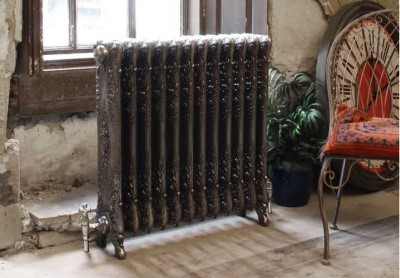Posted: Monday, September 28, 2020

When it comes to looking after your radiators, there are some steps you can take well before autumn truly sets in to keep them efficient and lasting for years.
When the temperatures drop, you want your heating to work properly to keep your home warm. One step you can take is to balance your radiators whenever you check your boiler and central heating for any potential cold spots.
Trads is here to explain not only why you should balance your radiators but we’ll explain how you should balance them so your heating is ready for winter. Read on to find out more...
Radiators are very reliable and can last for decades, providing consistent and comfortable heating. Radiator maintenance doesn’t take long but it’s important to make sure your system is running efficiently. After all, they are just one part of a larger central heating system.
Radiators are fairly easy to care for, requiring some basic seasonal maintenance to keep them running for years. It’s always best to do your maintenance in the summer or early autumn for a number of reasons. Firstly, so you can see what is and isn’t working well before you need it. Secondly, because plumbers are often more available at this time of year.
There are few things nicer in autumn and winter than having a warm home to wake up in or come back to when the weather is cold.
However, if you’ve found that your radiators stay cold, you may need some help. Besides just leaving you cold and shivering, radiators that fail to heat up can also indicate larger problems. These can include debris in the system causing blockages or a poor system set up.
A radiator may be cold for a number of reasons, but there are also some fixes. We’ve highlighted the main areas below:
Check your heating to make sure that it is on the right setting and working properly. If you have a combi-boiler, check that it’s set for hot water and heating and not in a ‘summer mode’, if you have one. You should make sure there is no fault code displayed on your boiler as this may be more complicated to deal with.
If your heating system has a heat pump, ensure it’s working. If the pump has stopped working, it won’t heat the water needed to keep your radiators warm. This will result in all of your radiators losing their temperature. The easiest way to check if your heat pump is working properly is to see if it’s making any noise.
If one or more radiators in your home are cold, this may mean there is air in the system. Air in a radiator tends to gather at higher points - like the top of the radiator - and prevents water from being distributed evenly.
A cold radiator can be caused by a stuck valve. This will often be the case if you have an issue with just one radiator. The thermostatic valve, the white one that controls water flow, can become seized due to age or even a lack of use.
If your boiler and pump are working normally, your water pressure may be the fault. For a residential gas boiler, 1.0 bar will often be the correct pressure, but always check your manufacturer’s instructions. The pressure level will be shown on the gauge and you may need to balance your system to fix it.
Simply, unbalanced radiators won’t heat up at the same speed as each other, leaving some areas of your home colder than others. It can become quite an issue when it gets to cold winter nights. It can also mean putting extra stress on your boiler by trying to get warmth into a room that is cold because the radiator is unbalanced.
Balancing radiators means matching the speed radiators take to heat up across all of the rooms in your home. It’s simple but very important.
Balancing a radiator is entirely different both in terms of process and purpose to bleeding a radiator. Bleeding a radiator is done to a single radiator which is not heating up evenly or at all because air has become trapped inside.
Read more: How to Bleed Your Radiators
Is it time you updated your radiators? Here at Trads, we have an excellent range of beautiful cast iron and steel radiators to update your home with!
Feel free to contact us if you need any help choosing a radiator
< Back To Blog